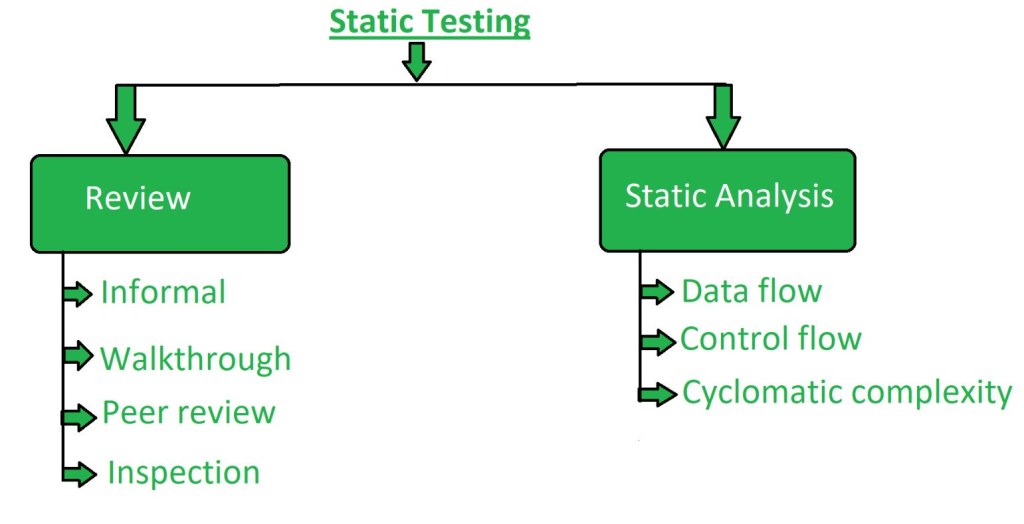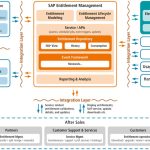Mastering Software Review Techniques: Unleashing The Power Of Effective Evaluation!
Software Review Techniques: A Comprehensive Guide for Effective Evaluation
Greetings, Readers! In this article, we will delve into the world of software review techniques. As technology continues to evolve at a rapid pace, it has become crucial for businesses and individuals to assess software products thoroughly before making any investments. With the abundance of options available in the market, understanding the art of software review techniques is essential in making informed decisions. So, let’s explore the various aspects of this evaluation process.
Introduction: Understanding Software Review Techniques
Software review techniques encompass methodologies and strategies used to evaluate software products based on a set of predefined criteria. These techniques aim to provide an objective assessment of a software’s features, performance, usability, security, and overall value proposition. By employing these techniques, businesses and individuals can make informed decisions about which software solution best suits their needs.
1 Picture Gallery: Mastering Software Review Techniques: Unleashing The Power Of Effective Evaluation!

Now, let’s dive into the specifics of what, who, when, where, why, and how of software review techniques.
What are Software Review Techniques?
Software review techniques are systematic approaches used to assess software products’ functionalities, performance, and other critical aspects. These techniques involve various testing methods, inspections, and evaluations to analyze the software’s strengths and weaknesses. By employing software review techniques, professionals can ensure that the software meets their specific requirements and offers optimal performance.
Testing Methods:
Software review techniques often involve extensive testing of the software. This includes functional testing, performance testing, usability testing, security testing, and compatibility testing. Each testing method aims to evaluate different aspects of the software’s functionality and performance.
Inspections:

Image Source: geeksforgeeks.org
In addition to testing, inspections play a vital role in software review techniques. Inspections involve in-depth code reviews, design analysis, and documentation examinations. By conducting inspections, reviewers can identify any potential issues or areas that require improvement within the software.
Evaluations:
Software review techniques also encompass evaluations that assess the overall value proposition of the software. These evaluations involve comparing the software against competitors, analyzing customer reviews, and considering factors such as pricing, support, and future development plans.
Who Should Perform Software Review Techniques?
Software review techniques are typically performed by professionals with expertise in software development, quality assurance, or project management. These individuals possess the necessary skills and knowledge to thoroughly evaluate software products and understand the specific requirements of the organization or individual seeking the review.
Quality Assurance Teams:
Quality assurance teams play a crucial role in conducting software review techniques. These teams are responsible for ensuring that the software meets the required standards and specifications. They perform rigorous testing, inspections, and evaluations to guarantee the software’s quality and reliability.
Independent Reviewers:
Independent reviewers, such as industry experts or specialized consultants, can also be engaged to perform software review techniques. Their unbiased perspective and extensive experience can provide valuable insights into the software’s strengths, weaknesses, and overall suitability for specific use cases.
When Should Software Review Techniques be Conducted?
Software review techniques should be conducted at various stages of the software development lifecycle. It is essential to assess the software during its early development stages to identify any issues and make necessary improvements promptly. Additionally, software review techniques can also be conducted when considering the adoption of a new software solution or during periodic evaluations of existing software.
Where to Perform Software Review Techniques?
Software review techniques can be performed in various settings, depending on the specific requirements and resources available. These include:
In-house Testing Environments:
Organizations can set up dedicated testing environments within their premises to conduct software review techniques. This allows them to evaluate the software in a controlled environment and assess its compatibility with their existing infrastructure.
Cloud-based Testing Platforms:
Cloud-based testing platforms provide the convenience of performing software review techniques remotely. These platforms offer a range of tools and resources to effectively evaluate software products in a virtual environment.
Why are Software Review Techniques Important?
Software review techniques play a crucial role in ensuring the selection and implementation of high-quality software products. By employing these techniques, businesses and individuals can:
Minimize Risks:
Thorough software review techniques help identify potential risks and issues early on, allowing organizations to mitigate them before they translate into costly problems.
Optimize Performance:
By evaluating the software’s performance through testing, inspections, and evaluations, organizations can select software solutions that offer optimal functionality and efficiency.
Enhance User Experience:
Software review techniques focus on assessing usability, ensuring that the software provides a seamless user experience. This leads to increased user satisfaction and productivity.
Maximize Return on Investment:
By selecting the most suitable software product based on thorough review techniques, organizations can ensure that their investment delivers the desired outcomes and long-term value.
Stay Ahead of Competition:
Software review techniques help businesses stay ahead of the competition by adopting cutting-edge software solutions that align with their specific needs and goals.
How to Conduct Software Review Techniques?
Conducting effective software review techniques involves a systematic approach that includes the following steps:
Defining Evaluation Criteria:
Establish clear evaluation criteria based on the specific requirements and objectives of the software review. This ensures that the review process remains focused and yields relevant results.
Gathering Information:
Collect all the necessary information about the software, including its features, functionality, technical specifications, and user feedback. This information forms the basis for the evaluation process.
Performing Testing and Inspections:
Conduct various testing methods and inspections to analyze the software’s performance, security, usability, and other critical aspects. This step provides valuable insights into the software’s strengths and weaknesses.
Comparing and Analyzing:
Compare the software against competitors and analyze its advantages and disadvantages. Consider factors such as pricing, support, and future development plans to make an informed decision.
Documenting Findings:
Thoroughly document the findings of the software review, including test results, inspection reports, and evaluations. This documentation serves as a reference for future decision-making.
Presenting Recommendations:
Based on the findings, present recommendations and conclusions to stakeholders, highlighting the software’s suitability, potential risks, and advantages.
Advantages and Disadvantages of Software Review Techniques
Software review techniques offer several advantages and disadvantages that should be considered when conducting evaluations:
Advantages:
1. Objective Assessment: Software review techniques provide an objective evaluation, enabling unbiased decision-making.
2. Risk Mitigation: Thorough reviews help identify potential risks, allowing organizations to implement mitigation strategies.
3. Quality Assurance: By evaluating software products, organizations can ensure high-quality solutions that meet their requirements.
4. User Satisfaction: Software review techniques focus on usability, leading to enhanced user satisfaction and productivity.
5. Cost Optimization: Selecting the right software based on thorough reviews helps organizations optimize their investments.
Disadvantages:
1. Time-Consuming: Conducting comprehensive software review techniques can be time-consuming, especially for complex software products.
2. Resource Intensive: Thorough evaluations require dedicated resources, including testing environments, tools, and skilled personnel.
3. Subjectivity: Despite efforts to maintain objectivity, some level of subjectivity may exist in software reviews due to personal preferences and biases.
4. Limited Scope: Software review techniques may not cover all possible scenarios, and certain aspects of the software may remain unexplored.
5. Changing Dynamics: Technology evolves rapidly, and software products may undergo updates or modifications, rendering previous reviews outdated.
Frequently Asked Questions (FAQs)
1. What are the key factors to consider when selecting software for review?
When selecting software for review, it is essential to consider factors such as its relevance to your specific needs, the software’s track record, customer reviews, and the level of support provided by the vendor.
2. What are the different types of software review techniques?
Software review techniques can include various testing methods, inspections, and evaluations. Some common types of techniques include functional testing, performance testing, usability testing, code inspections, and competitive analysis.
3. Are software review techniques applicable to both commercial and open-source software?
Yes, software review techniques are applicable to both commercial and open-source software. Regardless of the software’s licensing model, thorough evaluations are crucial to ensure optimal performance and suitability for specific needs.
4. How often should software review techniques be conducted for existing software?
The frequency of software review techniques for existing software depends on various factors, including the software’s criticality, complexity, and the organization’s evolving requirements. In general, conducting periodic reviews, especially during major updates or changes in requirements, is recommended.
5. Can software review techniques guarantee the selection of the best software?
While software review techniques significantly increase the chances of selecting suitable software, they cannot guarantee the absolute best choice. The suitability of software depends on various factors, including the specific needs of the organization or individual and external market dynamics.
Conclusion
In conclusion, software review techniques are indispensable in the process of evaluating software products effectively. By employing thorough testing, inspections, and evaluations, businesses and individuals can make informed decisions based on objective assessments. These techniques help minimize risks, optimize performance, enhance user experience, and maximize return on investment. Remember, conducting software review techniques involves defining evaluation criteria, gathering information, performing testing and inspections, comparing and analyzing, documenting findings, and presenting recommendations. By following these steps and considering the advantages and disadvantages, you can ensure successful software evaluations that lead to optimal decision-making.
Final Remarks
In this fast-paced technological landscape, selecting the right software is crucial for the success of organizations and individuals alike. However, it is important to note that software review techniques provide valuable insights but should not be the sole basis for decision-making. Other factors, such as budget, scalability, and long-term goals, should also be considered. Additionally, the dynamic nature of technology means that software products and their reviews may become outdated over time. Therefore, it is advisable to regularly reassess software solutions and conduct reviews as needed. With a systematic and comprehensive approach to software review techniques, you can navigate through the vast array of options and make informed choices that meet your unique requirements. Happy reviewing!
This post topic: Software Reviews

